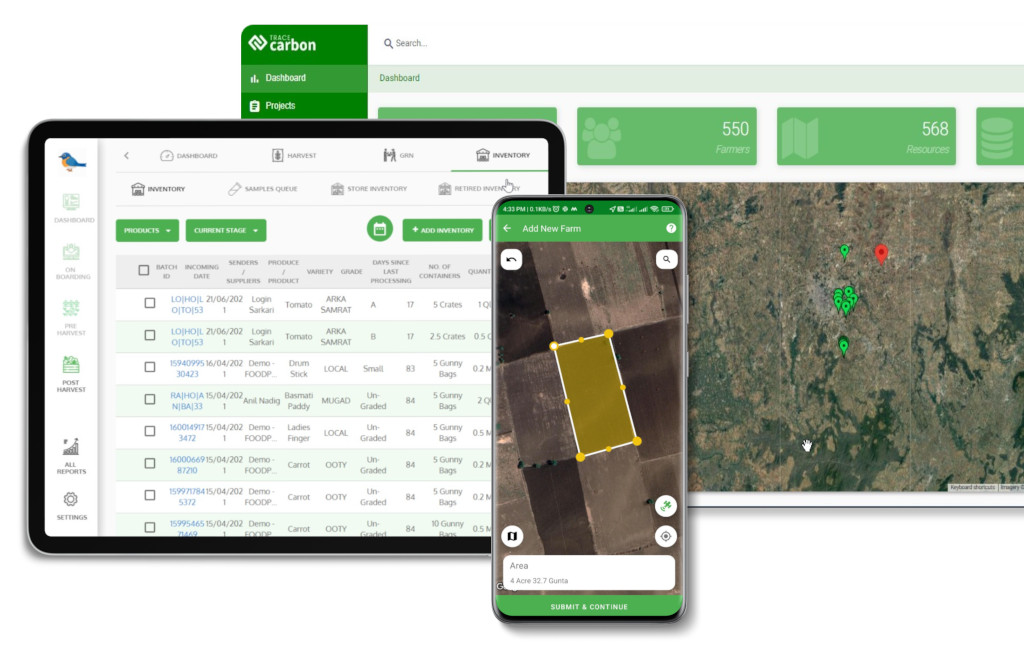Contact: +91 99725 24322 |
Menu
Menu
Quick summary: Decoding EUDR Proposal: Learn what the revised EU Deforestation Regulation means for your supply chain. Explore key updates, new categories, simplified compliance for small producers, and how digital traceability ensures deforestation-free sourcing.

Decoding the EUDR Proposal reveals a shift toward shared accountability, streamlined reporting, and digital-first compliance across the agricultural and forestry supply chain. The revised EU Deforestation Regulation introduces new roles, timelines, and compliance pathways to enhance traceability across global supply chains. Large and medium enterprises must still meet the December 2025 deadline, while downstream operators like retailers and manufacturers must register in the EUDR system and maintain supplier traceability. Micro and small producers in low-risk countries can file a one-time simplified declaration instead of full due diligence.
The EU Deforestation Regulation (EUDR) represents one of the most ambitious global efforts to combat deforestation linked to agricultural and forestry commodities such as cocoa, coffee, soy, palm oil, rubber, and timber. Its goal is simple yet transformative to ensure that any product placed on or exported from the EU market is deforestation-free and legally produced, aligning trade with global climate and biodiversity commitments.
This regulation fundamentally reshapes how commodities are sourced, verified, and traded. For exporters and importers, it introduces mandatory traceability to the plot level, requiring proof that supply chains do not contribute to forest degradation. For supply-chain stakeholders, from producers to retailers, it establishes a new standard of accountability and transparency, where sustainability is not optional but a compliance requirement.
In essence, the EUDR revision underscores a pivotal shift transforming environmental responsibility into a trade prerequisite. Businesses that adapt early with digital traceability and due diligence systems will not only meet compliance but also gain a competitive edge in the growing global demand for sustainable sourcing.
Key Takeaways
The European Commission’s revised EUDR proposal maintains the regulation’s core objective of achieving deforestation-free supply chains while refining how compliance is implemented across different business categories. The new proposal introduces targeted adjustments that balance environmental integrity with operational feasibility for diverse stakeholders in the supply chain.
Despite pressure for a broader delay, the Commission has upheld the December 30, 2025, compliance deadline for large and medium-sized enterprises. These operators, typically major exporters, processors, and importers, must still demonstrate full traceability to the plot level and submit a Due Diligence Statement (DDS) for each relevant commodity before placing it on the EU market. This signals that the EU remains firm on its climate commitments while allowing smaller operators more flexibility.

One of the most significant updates is the creation of a new category called “Downstream Operators,” which includes retailers, manufacturers, and other businesses that are further along the supply chain and do not directly import or produce regulated commodities.
These entities will not be required to file full DDS reports. Still, they must register in the EUDR system, maintain traceability records, and pass on declaration identifiers and reference numbers received from their suppliers. This ensures that traceability continues seamlessly down the chain, even when responsibilities shift from producers to end-market actors.
Recognizing the disproportionate compliance burden on smallholders, the proposal introduces a simplified compliance pathway for micro and small primary operators located in low-risk countries.
Instead of filing a full DDS for each shipment, these operators can submit a one-time simplified declaration confirming their production and location via the EU information system. They may use postal addresses instead of precise geolocation data, easing data submission while maintaining accountability. Additionally, the enforcement timeline is extended to December 30, 2026, giving them an extra year to adapt.
The revised proposal also reduces administrative complexity for traders and downstream operators, who will no longer need to verify full due diligence or submit individual DDS for every transaction. Instead, their focus shifts to maintaining documentation, collecting supplier declarations, and ensuring traceability continuity across the value chain.
This streamlining acknowledges that these operators often handle large, mixed commodity flows and encourages them to prioritize digital traceability systems over repetitive manual reporting.
In summary, the Commission’s updated EUDR proposal reflects a calibrated approach that maintains rigor for large players, simplifying compliance for smallholders, and introduces a shared responsibility model across the supply chain. The emphasis on traceability, digital documentation, and differentiated reporting ensures that environmental goals are met without overburdening smaller market actors.
Learn how to file your Due Diligence Statement (DDS) step-by-step and stay audit-ready under the new EUDR framework.
Read our guide on how to file a DDS correctly.
Understand how the EU’s benchmarking system classifies countries and what it means for your compliance strategy.
Read our blog on EUDR country risk classification.
The revised EUDR proposal doesn’t just reshape compliance rules; it redefines how every participant in the global commodity supply chain operates. Whether you’re a large exporter, a trader, a manufacturer, or a smallholder, the regulation introduces both new responsibilities and strategic opportunities. Here’s what it means for each stakeholder group:
Large and medium operators remain at the center of the EUDR’s compliance framework. These businesses must ensure end-to-end visibility across their sourcing networks from farm plots and processing units to export shipments.
To remain compliant, they must:
For these players, the next year represents a critical compliance window. Investing in digital traceability platforms, satellite monitoring, and data integration systems will be key to avoiding disruptions and maintaining EU market access.
Traders, processors, and manufacturers often operating between producers and retailers now carry the responsibility of traceability stewardship rather than direct due diligence verification.
Under the new proposal, these entities must:
This shift means that traders and manufacturers must act as compliance bridges, ensuring that supplier data remains intact and traceable throughout the chain.
Those that digitize their supply chain processes early through blockchain or ERP-integrated systems will gain a competitive advantage by streamlining audits and improving buyer confidence.
For small farmers, ranchers, or foresters in low-risk countries, the new EUDR framework provides much-needed relief through the simplified declaration system.
Rather than submitting a full DDS, these operators can:
This inclusion is a step toward equitable sustainability, ensuring smallholders are not excluded from EU trade due to high compliance costs. However, to seize this opportunity, they’ll need support in digital onboarding, data entry, and awareness areas where traceability solutions and FPO-led partnerships can play a crucial role.
In essence, the EUDR revision transforms compliance into a shared responsibility across the supply chain. From large exporters ensuring digital traceability to smallholders gaining fairer market access, success will depend on how efficiently businesses can collaborate, digitize, and document sustainability at every step.
The revised EUDR proposal presents a dual reality for agribusinesses, traders, and manufacturers it reduces short-term pressure through targeted adjustments, yet raises the stakes for long-term sustainability leadership. While the regulation refines implementation, its intent remains clear: to make deforestation-free sourcing a market baseline. The way businesses respond now will determine whether they fall behind or lead the next wave of ethical trade.
According to the Environmental Investigation Agency (EIA International), any delay or softening of enforcement could dilute the regulation’s impact.
A prolonged grace period may:
Moreover, weaker enforcement risks sending the wrong signal globally that sustainability goals are negotiable. Businesses that misinterpret the delay as a reprieve rather than a preparation window could face major setbacks once full enforcement begins.
For forward-looking organizations, this period offers a strategic head start. Early investment in digital traceability technologies such as batch-level mapping, blockchain integration, IoT-enabled monitoring, and automated data collection turns compliance into a long-term differentiator.
By digitizing supply chains now, companies can:
In short, what starts as regulatory readiness can quickly evolve into a market leadership opportunity particularly as global buyers and ESG-focused investors increasingly prioritize traceable, low-carbon sourcing.
The proposal aligns neatly with broader ESG (Environmental, Social, and Governance) and sustainability frameworks that guide corporate reporting and investor expectations. Companies that integrate EUDR compliance with carbon accounting, responsible sourcing, and sustainability certifications (like Fairtrade, Rainforest Alliance, or Organic) create unified, auditable systems that reduce redundancy.
This convergence allows businesses to:
In summary, while the EUDR proposal’s flexibility reduces short-term regulatory pressure, it also separates proactive leaders from passive laggards. The risk lies in complacency; the opportunity lies in digital transformation and ESG integration. Those who act now adopting traceability platforms, automating compliance, and aligning with sustainability frameworks, will emerge as trusted, future-ready suppliers in the global deforestation-free economy.
As the EUDR compliance deadline approaches, businesses across the agri-commodity value chain must move from awareness to execution. The revised regulation gives operators an opportunity not to slow down, but to strengthen systems and prove readiness before enforcement begins.
Here’s a practical roadmap to help exporters, traders, and cooperatives build a deforestation-free, digitally verifiable supply chain.
The foundation of compliance lies in complete supply-chain visibility.
A well-structured supplier database not only satisfies regulatory traceability requirements but also enables better risk management and sustainability benchmarking.
Manual record-keeping no longer meets EUDR expectations.
Digitization ensures accuracy, saves audit time, and supports seamless integration with the EU’s information systems for due diligence submissions.
The EUDR demands data integrity and transparency throughout the chain of custody.
Such digital infrastructure creates a single source of truth for all actors, essential for multi-stakeholder coordination and external verification.
With multiple actors and data points involved, automation is key to staying audit-ready.
Automation reduces administrative burden and ensures consistency across reporting cycles.
Compliance is not a one-time event; it’s a continuous improvement process.
Continuous monitoring builds resilience and helps businesses evolve with future updates to EUDR or other global sustainability standards.
Preparing for the EUDR requires more than ticking boxes it demands integration of traceability, technology, and training into daily operations. Companies that act now will move from reactive compliance to proactive leadership, securing trust, transparency, and market access in an era of sustainable trade.
Starting with the free trial gives you a low-risk way to test readiness ahead of the enforcement deadline. It also lets you:
The EUDR proposal represents more than just regulatory change – it’s a global wake-up call for supply chains to become transparent, ethical, and data-driven. By introducing distinct pathways for large operators, downstream entities, and small producers, the EU has created a model that balances accountability with inclusion. Businesses that act early, digitizing traceability, automating due diligence, and empowering smallholders won’t just stay compliant; they’ll lead the market in deforestation-free, sustainable sourcing.
The path to compliance isn’t just about avoiding penalties; it’s about earning trust, securing access, and future-proofing trade.
Understand how to collect data, assess risks, and submit compliant DDS reports step by step.
Read our blog on EUDR Due Diligence best practices.
Learn how to register, submit, and link your Due Diligence Statements directly within the EU portal.
Read our guide to the TRACES workflow.
See how the right technology helps you meet EUDR requirements faster and smarter.
Read our blog on technology-driven EUDR compliance.
The EU Deforestation Regulation aims to ensure that products entering or leaving the EU such as cocoa, coffee, soy, palm oil, and timber, are deforestation-free and legally produced, promoting transparent, sustainable trade.
Large operators must maintain plot-level traceability and submit full Due Diligence Statements. Downstream operators like retailers and manufacturers must register in the EUDR system and maintain traceability records. Micro and small producers in low-risk countries can submit a simplified one-time declaration.
Companies should digitize supplier data, integrate blockchain-backed traceability systems, and automate compliance reporting. Platforms like TraceX help build end-to-end visibility, generate audit-ready documentation, and simplify EUDR submissions ensuring readiness well before enforcement begins.
